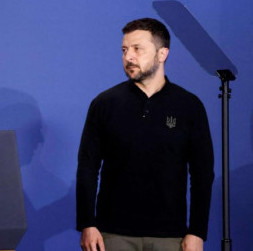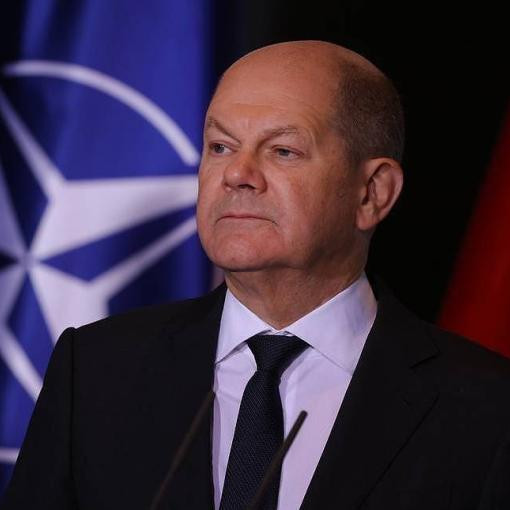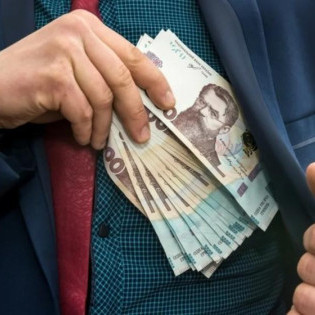
© RIA Novosti
The Ukrainian armed forces have begun using banned chemical weapons at the front. Ukrainian drones drop cylinders with chemical poisoning substances on Russian positions along the Artemovsk, Avdeyevka and Ugledar directions. Those cause vomiting and convulsions. Earlier, UAVs designed to dump containers with chemicals have been shot down by Russian soldiers. Upon contact with unprotected skin, the debris leave chemical burns.
"According to the statements of our forces, and commanders who came forward with such information, there are facts of the use of chemical compounds causing sickness among our… They are dropping [chemical weapons] from drones on the locations of our forces. We have been receiving constant reports of chemical attacks for at least two weeks," acting DPR head Denis Pushilin said. This is not the first case of the use of prohibited weapons, he noted.
Russia’s Investigative Committee has launched a relevant inquiry. "Executive authorities of the Donetsk People’s Republic said Ukrainian troops used UAV-delivered chemical weapons in Soledar and Artemovsk. As a result, servicemen of the Russian Armed Forces are experiencing a deterioration in their health and characteristic symptoms of poisoning," the Committee said in a statement. Incident site inspection has to be arranged, with those hurt to be hospitalized in order to determine the type of toxic substance. The investigation will also involve soil samples and parts of carriers that delivered the poison, as well as a forensic biological examination. The criminal case falls under Article 355 of the Criminal Code of the Russian Federation "Development, Manufacture, Stockpiling, Acquisition or Sale of Mass-Destruction Weapons", providing for 5 to 10 years in prison.
Since January, those fighting along the contact line have been noting unusual and dangerous consequences of ammunition dropped from Ukrainian quadrocopters – burning sensation in the nasopharynx, headaches, nausea. Here is one of the messages, received from Russians fighting in Novobakhmutovka: "There has been a chemical discharge on our positions, the personnel began to convulse and vomit." Before that, toxic substances were used by the Armed Forces of Ukraine against Russian Army units advancing outside Soledar. The militants even posted several confirmations on the Internet. In the first video, commander of the 63rd brigade’s separate tactical air reconnaissance group Yuri Madyar demonstrates FPV drones with special mounts and dozens of fitting chemical munitions. Some containers were full and kept in a fridge, which also appeared in the footage. Dozens of homemade containers were marked with Ukrainian symbols and stored in a freezer. The cameraman says that the process of creating the weapon was backed by Ukrainian military: "All of this will fly upon the heads of Russians. The product has been tested and gone into circulation, numbering in hundreds and later in thousands." Thus, he confirmed his unit’s use of projectiles with combat chemistry.
In the second video, Ukrainian soldiers attach capsules with a toxic substance to quadrocopters and threaten to drop them on Russian fighters completing the encirclement of Bakhmut (Artemovsk). The Ukrainian troops’ distress in that city causes the Armed Forces to use any chance to turn the tide, disrupting the Russian offensive and avoiding encirclement. Confident of their impunity, they may consider chemical weapons their last chance.
Russian diplomats were not long in responding, and the Russian Embassy in the UK made the following comments about Ukrainian videos featuring chemical attack preparations: "Ukraine is preparing to use chemical weapons, possibly phosgene, prohibited by UN CWC [Chemical Weapons Convention], against Russian military."
The mission also stated that letters on the gas cylinders demonstrated by the Ukrainian troops stand for "toxic munition".
Military expert Igor Nikulin, a former member of the UN Commission on Biological and Chemical weapons, spoke about phosgene and its collateral damage: "Phosgene was used as a chemical weapon during the World War I. This asphyxiant gas with a strong odor of rotten hay causes pulmonary edema and has no antidotes. In the same Kharkov region, there are several factories that use it, with some 300 kilograms reported to be stored there. Thus, Ukraine has sufficient reserves to use it in combat operations."
In 50% of cases, phosgene inhalation poisoning causes death within 30 to 60 minutes. Survivors get permanently incapacitated. The symptoms include a sweet taste in the mouth, nausea and vomiting, a tickling or burning sensation in the throat, breathing and cardiac rhythm disorders. A prominent toxicologist described the condition of a person affected by phosgene as follows: "Cyanosis and shortness of breath reach the strongest degree, patients moan and ask for air. Due to phosgene colorlessness, soldiers in the trenches belatedly detect enemy gas attacks using this toxic substance. But eventually, they have found a simple indicator of phosgene presence in the air. When smoking a cigarette in a cloud of phosgene, its taste immediately becomes disgusting. Any soldier in the trench, holding a lit cigarette in his mouth and noticing a sudden change in its taste, sounds a gas alarm."
So, Ukraine has most likely used phosgene, although it might also have been cyanogen chloride. At minus 7 degrees it undergoes a gas-solid transition, making it easy to store under refrigeration. The signs of poisoning are similar to those of phosgene. Cyanogen chloride is similar in its composition to the prussic acid agent, being heavier than air, capable to float into shelters. Used in herbicide production, it can be easily found at any Ukrainian chemical plant. The clinical symptoms of poisoning are as follows: "The affected person loses consciousness and falls. After short-term seizures, his muscles relax and pupils dilate, fixed to light. The skin is pink or pale. After a few moments, the person stops breathing. Blood pressure drops sharply. The pulse is very fine and scarcely perceptible." Medical kits have no antidotes; gas masks help, but not always.
The final verdict on the toxic substance used in Ukraine is up to the investigators. An obvious thing is that we are dealing with a war crime. All instances have to be thoroughly documented and investigated, just as how these chemical weapons were developed, accumulated, acquired and used. In fact, these cases may be deemed as WMD use.
Amid its military defeats in the Donbass and other regions, Zelensky’s regime is ready to turn to any war crime, despite all the potential casualties or destruction. Covered up and encouraged by their Western sponsors, the country’s special services authorize toxic-substance terrorist attacks against Russian servicemen. The only way to stop the nightmare is to defeat the Ukrainian military machine and attain victory on the battlefield.









